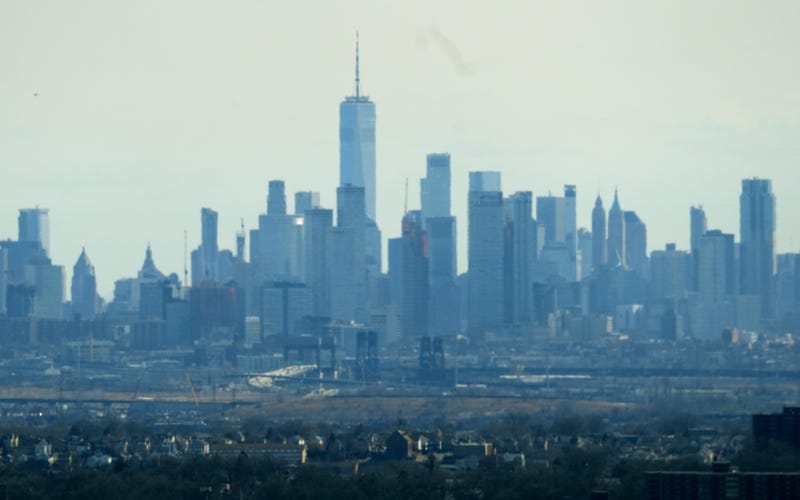
NEW YORK (BLOOMBERG) -- New York City’s population is growing again, according to Census Bureau estimates, part of a broader rebound in many areas that saw the largest losses in the pandemic’s early years.
A key driver, though, is international arrivals — raising the question of how demographics in the nation’s biggest city may shift under President Donald Trump’s threatened immigration crackdown.
Overall, Americans continue to move south to the US Sunbelt. Nine of the ten fastest-growing metro areas are in the South, more than half of them in Texas or Florida, according to figures from the latest Census survey published Thursday. Populations in almost a quarter of metro areas remained smaller than in March 2020 when the pandemic hit.
The population of New York City rose 1% from mid-2023 to mid-2024, more than double its growth rate the previous year — even as the nation’s largest city, with 8.5 million residents, remains some 325,000 smaller than in early 2020.
More than 1 million people have left the wider New York metro area since then, but there have been inflows too. The number of international arrivals climbed 21% last year, bringing the total since mid-2022 to above 525,000, the Bureau estimates. Over the same period, some 350,000 NYC-area residents moved away, though domestic outmigration last year was less than half its 2022 level.
“Increasingly, population growth in metro areas is being shaped by international migration,” said Kristie Wilder, a demographer in the Census Bureau’s Population Division, in the release. “While births continue to contribute to overall growth, rising net international migration is offsetting the ongoing net domestic outmigration we see in many of these areas.”
Trump has vowed to deport unauthorized migrants in unprecedented numbers, as well as bolstering US border controls to slow the flow of new arrivals.

‘Pandemic Pattern’
The data show many big US cities are still losing residents to smaller metro areas, as Americans leave more expensive urban centers in search of cheaper housing. The spread of remote work has made such moves easier.
“The overall pandemic pattern is still very much there,” said University of Virginia demographer Hamilton Lombard. “Lower-cost areas are pulling in residents.” But migration rates seem to be slowing as high interest rates make new mortgages more expensive, he said.
Los Angeles, New York and San Francisco topped the list of cities with the biggest population drops since early 2020, while at the other end of the table Dallas, Houston and Phoenix were the biggest gainers.
One-third of US counties saw their populations drop last year, the same as in 2023, and significantly fewer than in previous years.
Of the 15 metro areas that saw the most domestic migration between 2023 and 2024, ten were in Florida or Texas. Dallas was the fastest growing area for domestic moves last year, while Miami climbed two places to reach 6th in the rankings of most populous US cities.
Among smaller towns, 7 of the 10 fastest-growing were in the South, with locations in Georgia and Florida heading the list.
Big Apple
In New York City, every borough but Staten Island remains below the April 2020 estimate. Manhattan is coming back — it erased two-thirds of its population losses — but is still down 2%. The Bronx is down 6% from 2020, and Brooklyn and Queen are down roughly 4% each.
Still, the recent comeback saw New York add more residents than any other metro in the 12 months through July 1 — an additional 213,000 people.
International immigration in New York offset not only people moving away, but also fewer babies being born. The number of births declined for a second year, a pattern apparent across all the city’s boroughs except for Queens, where they rose by around 500.
Immigration isn’t the only trend that might help New York’s population stabilize in the future, said Eric Finnigan, vice president of demographics research at John Burns Research and Consulting. Companies calling employees back to the office four or five days a week may also be helping, he said.
What’s more, New York typically loses large numbers of residents to Florida every year — but a surge in home prices may be taking the shine off the Sunshine State. “Florida’s looking like less of a discount now,” Finnigan said.
